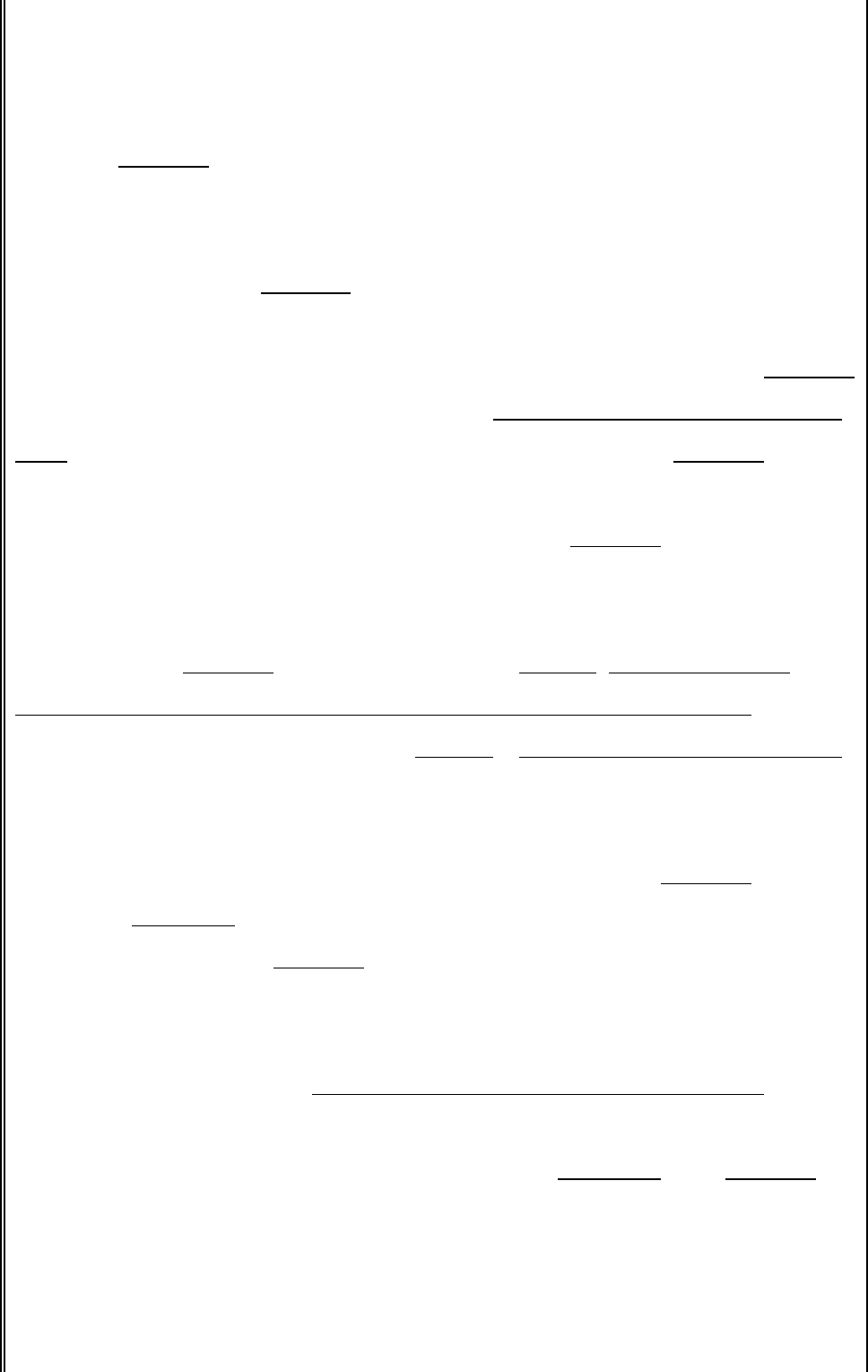
1
2
3
4
5
6
7
8
9
10
11
12
13
14
15
16
17
18
19
20
21
22
23
24
25
26
27
28
FOR PUBLICATION
UNITED STATES BANKRUPTCY COURT
EASTERN DISTRICT OF CALIFORNIA
In re: )
)
ANGELO MARTEL LOVE, ) Case No. 19-20532-C-7
CHRISTINE MARIE LOVE, ) Chapter 7
Debtors. )
______________________________) Adversary No. 21-02045-C
)
CHRISTINE MARIE LOVE, )
Plaintiff, ) OPINION
)
v. )
)
UNITED STATES DEPARTMENT OF )
EDUCATION, FEDLOAN SERVICING, )
NELNET )
Defendants. )
)
Before: Christopher M. Klein
United States Bankruptcy Judge
CHRISTOPHER M. KLEIN, Bankruptcy Judge:
This was an “undue hardship” student loan discharge trial.
This trier of fact finds by preponderance of evidence that the
self-represented debtor plaintiff demonstrated “undue hardship on
the debtor and the debtor’s dependants” within the meaning of 11
U.S.C. § 523(a)(8).
Despite widespread belief that student loans are virtually
impossible to discharge in bankruptcy, the § 523(a)(8) tool that
Congress placed in the judicial toolbox in 1978 to assess “undue
hardship” is adequate to the task if only the bar and the bench
correctly do their jobs. Litigants must present factual evidence
of “undue hardship” that enables trial courts to make findings of
fact and conclusions of law by preponderance of evidence to be
reviewed on appeal for “clear error.”
Case Number: 2021-02045 Filed: 4/5/2023 Doc # 85

1
2
3
4
5
6
7
8
9
10
11
12
13
14
15
16
17
18
19
20
21
22
23
24
25
26
27
28
It is time to demythologize unwarranted and fallacious
dogmas and propaganda that have encrusted, ossified, neutralized,
and transmogrified § 523(a)(8) analysis into a misconception that
student loan debt is virtually impossible to discharge, even
though the “undue hardship” standard of proof is preponderance of
evidence and the standard of appellate review is “clear error.”
It is a paradox. Only the most compelling cases seem to be
able to qualify for discharge as “undue hardship” on a standard
of proof that is preponderance of evidence.
The solution follows from the Supreme Court’s explication of
the proper roles of trial and appellate courts facing “mixed
questions” of law and fact and proper standard of review. U.S.
Bank Nat’l Ass’n v, Village at Lakeridge, 138 S.Ct. 960 (2018).
Student loan “undue hardship” questions depend intensely on
the facts of each case. As such, they are mixed questions of law
and fact in which factual questions predominate over legal
analysis that must, if there has been a trial, be reviewed on
appeal under the deferential “clear error” standard. If there has
been a trial with findings of fact and conclusions of law, then
appellate review must be under the “clear error” standard that
does not permit appellate courts to substitute judgment for that
of the trial court. Lakeridge, 138 S.Ct. at 966-67.
Mindful that factual questions predominate in a § 523(a)(8)
mixed question of law and fact, this court hereby makes findings
of fact and conclusions of law determining that excepting the
subject debt from discharge would constitute an “undue hardship”
on the debtor and her dependents.
2
Case Number: 2021-02045 Filed: 4/5/2023 Doc # 85

1
2
3
4
5
6
7
8
9
10
11
12
13
14
15
16
17
18
19
20
21
22
23
24
25
26
27
28
Facts
These findings are rendered after a trial during which the
self-represented plaintiff testified and was cross-examined by
defendants’ counsel. Supplemental Findings are being filed under
seal because some of the relevant facts are intensely private and
personal. Permitting them to be published by those who routinely
post findings on the internet would chill the willingness of
litigants to provide candid testimony about sensitive matters
that are relevant and material to issues before the court.
1
Christine Love owes the United States Department of
Education about $27,270 for student loans incurred between 2016
and April 2018 while studying Healthcare Administration at
Ashford University, a proprietary school that closed under a
storm of litigation by the California Attorney General.
2
She may
also be exposed to liability for about $57,697 in student loans
incurred by her now-former spouse.
The studies at Ashford have produced no discernable
improvement in her employment opportunities.
She was forced to abandon her studies due to debilitating
injuries suffered at the hands of her now-former husband. The
1
This court on its own motion is exercising its protective
authority under 11 U.S.C. § 107(b)(2) relating to potentially
scandalous or defamatory matter and under 11 U.S.C. § 107(c)
because this court finds disclosure would create undue risk of
unlawful injury to the individual debtor.
2
The California Attorney General obtained a judgment against
Ashford “for misleading students about career outcomes, cost and
financial aid, pace of degree programs, and transfer credits in
order to entice them to enroll at Ashford.” Statement of Dec., at
p. 47, People of the State of California v. Ashford University,
LLC, et al., Case No. 37-2018-00046134-CU-MC-CTL, March 3, 2022.
3
Case Number: 2021-02045 Filed: 4/5/2023 Doc # 85

1
2
3
4
5
6
7
8
9
10
11
12
13
14
15
16
17
18
19
20
21
22
23
24
25
26
27
28
ensuing divorce action terminated marital status in August 2019,
leaving for future resolution property division of the family
home. Her husband was sentenced to 6.7 years in state prison.
With spouse in prison and with two minor children, Love
could not afford to pay current debts. The voluntary chapter 7
case was filed January 30, 2019.
Love’s “current monthly income” was $3,390.09 from
employment as a Pharmacy Technician. After taxes and insurance,
her monthly income was $2,834.87. Her monthly expenses were
$3,949.00. She received gifts from her grandmother to help pay
bills. Her annual gross income of $40,681.08 was 43 percent of
the state’s median family income for her size family.
3
A Notice to File Claims was issued after the chapter 7
trustee made a finding of assets.
The United States Department of Education filed two timely
proofs of claim totaling $88,019.86.
4
Of that total, $28,249.86
was owed by Love as the borrower. The trustee paid a total of
$3,052.85 ($2,073.05 + $979.80) on those claims.
5
In this action, Love seeks discharge of all her liability
for student loans. That includes both her direct remaining debt
of $27,270.06 and any potential liability she may have for her
now-former spouse’s remaining debt of $57,697.14.
The United States concedes that Love has never been in
3
All numbers from Official Forms 106I, 106J & 122A-1.
4
Claim #11-1, US Dept of Ed c/o NELNET, $59,770.19, borrower
Angelo Love; Claim #13-1 US Dept of Ed c/o FEDLOANSERVICING,
$28,249.86, borrower Christine Love.
5
Trustee’s Final Report, Dkt #30, filed, 9/11/2019.
4
Case Number: 2021-02045 Filed: 4/5/2023 Doc # 85

1
2
3
4
5
6
7
8
9
10
11
12
13
14
15
16
17
18
19
20
21
22
23
24
25
26
27
28
default on student loans. In addition to the $3,052.85 paid in
the chapter 7 case, Love made voluntary additional payments of
$50.59. She was approved for a “REPAYE” flexible repayment plan
with $10.00 monthly payments beginning in February 2019 and made
payments under that plan. In January 2021, she was notified the
monthly REPAYE payment would increase to $284.20 per month. This
adversary proceeding was filed in June 2021.
Love received assistance from the California Keep Your Home
program in order to help with her mortgage, at a cost of an
$18,000 lien that eventually will have to be repaid.
Love has a history of diligent work for over 20 years in
low-paying jobs and of striving to improve her lot in life. From
2000 until 2013 she worked in assisted living facilities in
various humble capacities. She has since worked as a medical
records technician and as pharmacy technician. She presently is
employed in a clerical position reviewing health-care claims for
audits. She believes that she has reached her maximum income
potential. This court agrees and so finds.
Her grandmother explained that she helps Love with “food,
gas, and occasional household necessities and bills due to her
financial struggles.” The court believed that testimony, to which
there was no objection.
This court likewise believed Love’s testimony about her
minimal standard of living. There are no luxuries in her budget.
The evidence reveals a need for continuing medical care due to
her lingering physical injuries.
Based on observing Love’s credible testimony, this court
finds that she is sincere, hard-working, and has made an honest
5
Case Number: 2021-02045 Filed: 4/5/2023 Doc # 85

1
2
3
4
5
6
7
8
9
10
11
12
13
14
15
16
17
18
19
20
21
22
23
24
25
26
27
28
effort in good faith to address her student loan debt.
Moreover, this court finds that Love does not have
significant prospects for future increases in income beyond the
rate of inflation and finds that this state of affairs is likely
to persist indefinitely. She is doing the best she can in coping
with the challenges of life.
Jurisdiction
Subject-matter jurisdiction is founded on 28 U.S.C.
§ 1334(b). Determinations of dischargeability of student loans
are core proceedings a bankruptcy judge may hear and determine.
28 U.S.C. § 157(b)(2)(I).
Analysis
Student loan “undue hardship” issues under § 523(a)(8) are
assessed in the Ninth Circuit under the three-part “Brunner
Test,” borrowed from the Second Circuit. United Student Aid
Funds, Inc. v. Pena, 155 F.3d 1108 (9th Cir. 1998); Brunner v.
New York State Higher Educ. Serv. (In re Brunner), 831 F.2d 395
(2d Cir. 1987). Ms. Love’s situation is examined here through the
Brunner prism, focusing on what Brunner and Pena actually held.
I
Brunner Test
The first step of the three-part Brunner test is: the debtor
“cannot maintain, based on current income and expenses, a
‘minimal’ standard of living for [self] and dependents if forced
to repay the loans.” Pena, 155 F.3d at 1111; Brunner, 831 at 396.
6
Case Number: 2021-02045 Filed: 4/5/2023 Doc # 85

1
2
3
4
5
6
7
8
9
10
11
12
13
14
15
16
17
18
19
20
21
22
23
24
25
26
27
28
Second, the debtor must show that “additional circumstances
exist indicating that this state of affairs is likely to persist
for a significant portion of the repayment period of the student
loans.” Pena, 155 F.3d at 1111; Brunner, 831 at 396.
Third, the debtor “has made good faith efforts to repay the
loans.” Pena, 155 F.3d at 1111; Brunner, 831 at 396.
A
Pena and Brunner make a fascinating pair because their facts
led to opposite conclusions regarding “undue hardship.” Each
involved versions of § 523(a)(8) that permitted automatic
discharge regardless of hardship after the lapse of a specified
period. The issue in each was early discharge based on “undue
hardship” in lieu of waiting for the statutory period for
automatic discharge to elapse.
They presented two sides of the same coin. Using the same
test, the Second and Ninth Circuits each affirmed decisions that
had reached opposite conclusions regarding the existence of
“undue hardship.” The facts made all the difference.
B
Applying the Brunner Test in the Ninth Circuit
Accepting that Brunner is the law of the Ninth Circuit, how
Brunner is actually applied in the circuit is important. One
gains useful insights by comparing and contrasting the respective
successful and unsuccessful assertions of “undue hardship” in
Pena and Brunner. The standard of appellate review looms large in
discerning the appropriate “undue hardship” analysis.
7
Case Number: 2021-02045 Filed: 4/5/2023 Doc # 85

1
2
3
4
5
6
7
8
9
10
11
12
13
14
15
16
17
18
19
20
21
22
23
24
25
26
27
28
1
Minimal Standard of Living on Current Income
The first element of the Brunner test is “cannot maintain,
based on current income and expenses, a ‘minimal’ standard of
living for [self] and dependents if forced to repay the loans.”
Monthly income and monthly expenses were addressed
separately by the Ninth Circuit in Pena.
There was evidence that the Penas’ monthly income
fluctuated. The Ninth Circuit ruled it was not “clear error” for
the bankruptcy court to determine monthly income as $1,748 based
on the sum of take-home pay at the time of filing of $1,370 plus
a fixed disability payment of $378. Although there was evidence
that wages had increased between discovery and time of trial,
there also was evidence that income fluctuated. Hence, the Ninth
Circuit ruled, “we accept as not clearly erroneous the bankruptcy
court’s finding that the Penas’ monthly net income was $1,748.”
Pena, 155 F.3d at 1112.
As to monthly expenses, the Ninth Circuit affirmed as not
clearly erroneous the bankruptcy court’s averaging of monthly
expenses at three stages of the proceeding – when schedules were
filed, when interrogatories were answered, and time of trial. It
specifically rejected the argument that “current” income under
the Brunner test means the time of trial: “where evidence
suggests that the debtor’s income or expenses tend to fluctuate,
it is not inappropriate to average figures over a reasonable
period of time.” Pena, 155 F.3d at 1112.
Comparing average monthly expenses ($1,789) and net monthly
income ($1,748) there was a deficit of $41. In view of that $41
8
Case Number: 2021-02045 Filed: 4/5/2023 Doc # 85

1
2
3
4
5
6
7
8
9
10
11
12
13
14
15
16
17
18
19
20
21
22
23
24
25
26
27
28
monthly deficit, the Ninth Circuit ruled: “Clearly, in these
circumstances the Penas could not maintain a minimal standard of
living and pay off the student loans.” Pena, 155 F.3d at 1113.
That conclusion satisfied the first Brunner element in Pena.
2
Additional Circumstances
Next, the debtor must show that “additional circumstances”
exist indicating that the inability to maintain a minimal
standard of living will “persist for a significant period of the
repayment period of the student loans.”
In Pena, two factual findings by the bankruptcy court
satisfied the second Brunner element: First, there was the
finding of Mrs. Pena’s ongoing mental disability about which she
testified as impairing her ability to obtain “meaningful
permanent employment.” The Ninth Circuit rejected the proposition
that expert corroboration of the medical condition was required,
reasoning that the trial court was entitled to believe her
testimony and that the existence of a back disability award, as
well as receipt of ongoing disability payments sufficed such that
it was not clear error for the trial court to conclude that the
condition would persist.
The Ninth Circuit distinguished Pena from Brunner as
different because in Brunner there was no evidence that Ms.
Brunner’s mental state impaired her capacity to work. Pena, 155
F.3d at 1113-14.
Second, as other evidence, the Ninth Circuit ruled that low
value of the education provided is “relevant to [the student’s]
9
Case Number: 2021-02045 Filed: 4/5/2023 Doc # 85

1
2
3
4
5
6
7
8
9
10
11
12
13
14
15
16
17
18
19
20
21
22
23
24
25
26
27
28
future ability to pay off the student loans.” Specifically, the
loans incurred to pay ITT Technical Institute yielded a
credential as “Associate in Specialized Technology” that was
useless to Mr. Pena because it did not help him in his employment
and was not accepted by other colleges for course work credit.
Hence, the “bankruptcy court did not err in considering that
[Mr. Pena’s] income was not likely to increase as a result of his
ITT education.” Pena, 155 F.3d at 1114.
These findings satisfied the second Brunner prong.
3
“Good Faith” Effort to Repay Loans
As to “good faith,” the Ninth Circuit ruled the “bankruptcy
court did not clearly err in finding that the Penas exhibited
good faith in attempting to pay back the student loans.”
The record showed that there had been “several” payments and
“after being laid off ..., the debtors were given a 90-day
deferment, but then were unable to meet their obligations and
filed chapter 7.” This sufficed to support the bankruptcy court’s
finding of “good faith” efforts to repay the loans.
The Ninth Circuit rejected the argument that good faith was
undermined by their use of Mrs. Pena’s $8,000 back disability
benefit award to buy a used car and pay other bills.
6
6
The Ninth Circuit explained:
USA Funds does not suggest why good faith would have
required the Penas to pay the student loan debt prior to
paying down portions of their other debts ($43,360 minus
$8,685) when the other debts were approximately four times
the amount of the student loans.
10
Case Number: 2021-02045 Filed: 4/5/2023 Doc # 85

1
2
3
4
5
6
7
8
9
10
11
12
13
14
15
16
17
18
19
20
21
22
23
24
25
26
27
28
Contrasting the Pena’s situation with the facts in Brunner,
the Ninth Circuit noted that Ms. Brunner failed to establish good
faith because she filed for discharge within a month after the
first payment of her loans came due, made virtually no attempt to
repay, and never requested the available deferment of payment
that was available to those who are unable to pay because of
prolonged unemployment. Pena, 155 F.3d at 1114.
Hence, in Pena “several” payments and brief deferment during
a job loss, followed by a chapter 7 filing, sufficed to satisfy
the “good faith” prong of Brunner against attack as clear error.
C
Ninth Circuit Decisions After Pena
The Ninth Circuit’s first noteworthy student loan decision
in the shadow of Pena was Saxman in 2003, ruling that bankruptcy
courts have equitable power to partially discharge student debt
to the extent payment would constitute an “undue hardship.”
Saxman v. Educ. Credit Mgmt. Corp. (In re Saxman), 325 F.3d 1168
(9th Cir. 2003); cf. Graves v. Myrvang (In re Myrvang), 232 F.3d
1116 (9th Cir. 2000) (§ 523(a)(15)).
In other words, bankruptcy courts have equitable power to
scale down student loan debt. E.g., Nitcher v. Educ. Credit Mgmt.
Corp. (In re Nitcher), 606 B.R. 67, 80 (Bankr. D. Or. 2019).
Another key Ninth Circuit decision in the wake of Pena was
Hedlund, a partial discharge case in which the Ninth Circuit
clarified and enforced the standard of review for “undue
Pena, 155 F.3d at 1114.
11
Case Number: 2021-02045 Filed: 4/5/2023 Doc # 85

1
2
3
4
5
6
7
8
9
10
11
12
13
14
15
16
17
18
19
20
21
22
23
24
25
26
27
28
hardship” determinations made by bankruptcy judges.
In Hedlund, the Ninth Circuit disapproved a district court’s
use of de novo review in which the district court had substituted
its judgment for that of the bankruptcy trial court and reversed
a determination of Brunner “good faith.” The Ninth Circuit, in
turn, reversed the district court because it erred by applying
the wrong standard of review: “a good faith finding under Brunner
should be reviewed for clear error.” Hedlund v. Educ. Res. Inst.
Inc., 718 F.3d 848, 854 (9th Cir. 2013). In short, Hedlund holds
it is error for an appellate court to substitute its judgment for
that of the trial court on the question of Brunner “good faith.”
The Ninth Circuit explained that “good faith” is “an
essentially factual inquiry” driven by “data of practical human
experience.” Hedlund, 718 F.3d at 854, citing Figter Ltd. v.
Teachers Ins. & Annuity Assoc. of Am. (In re Figter Ltd.), 118
F.3d 635, 638 (9th Cir. 1997); accord, United States v. McConney,
728 F.2d 1195, 1203-04 (9th Cir. 1984) (en banc).
Nor is the Ninth Circuit position regarding review of “good
faith” unique. The Seventh Circuit (which applies Brunner under
the name Roberson) has reached the identical conclusion on the
same reasoning: the Brunner good faith standard “combines a state
of mind (a fact) with a legal characterization (a mixed question
of law and fact) that Supreme Court precedent teaches be “treated
as factual in nature.” Krieger v. Educ. Credit Mgmt. Corp., 713
F.3d 882, 884 (7th Cir. 2013) (“It is important not to allow
judicial glosses, such as the language in Roberson and Brunner,
12
Case Number: 2021-02045 Filed: 4/5/2023 Doc # 85

1
2
3
4
5
6
7
8
9
10
11
12
13
14
15
16
17
18
19
20
21
22
23
24
25
26
27
28
to supersede the statute itself.”) (Easterbrook, J.).
7
II
The “Mixed Question” Conundrum
Despite the apparent clarity of a “clear error” review,
confusion persisted. Student loan creditors that lost “undue
hardship” cases in bankruptcy court would appeal and urge the
appellate court to substitute its judgment for that of the trial
court. Implicit in the arguments was a sense that “undue
hardship” is some form of a “mixed question” for which it is fair
game to substitute judgment on appeal.
An example is the district court’s reversal of the Hedlund
bankruptcy court, which the Ninth Circuit later reversed for
7
The Seventh Circuit’s Krieger decision is indicative of a
growing realization that something is rotten in Brunner. The
critiques come from two directions. First, per Krieger, too much
judicial gloss has transmogrified Brunner. Second, the question
in Brunner (what showing is required to prove “undue hardship”
when discharge is automatic after five years?) is very different
than the question after the automatic discharge was repealed
(what showing is required to prove “undue hardship” when it is
the only route to discharge lifetime?). Judge Pappas was an early
voice crying in the wilderness: Roth v. Educ. Credit Mgmt Corp.
(In re Roth), 490 B.R. 908, 920-23 (9th Cir. BAP 2013). The
chorus is gaining volume. E.g., McDowell v. Educ. Credit Mgmt
Corp. (In re McDowell), 549 B.R. 744, 765-66 n.32 (Bankr. D.
Idaho 2016); Rosenberg v. N.Y. State Higher Educ. Servs. Corp.
(In re Rosenberg), 610 B.R. 454, 458-59, 373 Ed. Law Rptr. 836
(Bankr. S.D.N.Y. 2020); Clavell v. U.S. Dep’t of Educ. (In re
Clavell), 611 B.R. 504, 513-14 (Bankr. S.D.N.Y. 2020); Wolfson v.
DeVos (In re Wolfson), 2022 WL 5055468 (Bankr. D. Del. 2022). See
generally Bruce Grohsgal, The Long Strange Trip to a Certainty of
Hopelessness: The Legislative and Political History of the
Nondischarge of Student Loans in Bankruptcy, 95 Am. Bankr. L.J.
443 (2021).
13
Case Number: 2021-02045 Filed: 4/5/2023 Doc # 85

1
2
3
4
5
6
7
8
9
10
11
12
13
14
15
16
17
18
19
20
21
22
23
24
25
26
27
28
using an improper standard of review. Hedlund, 718 F.3d at 854.
8
A more subtle version is paying lip-service to “clear error”
but then using the “mixed question” label as license to nit-pick
the trial court all the way to reversal in a manner that is the
antithesis of “clear error” review. E.g. Educ. Credit Mgmt. Corp.
v. Mason (In re Mason), 464 F.3d 878, 884-85 (9th Cir. 2006).
III
Supreme Court Resolves “Mixed Question” Conundrum
The “mixed question” conundrum was not unique to student
loans and befuddled appellate courts in a variety of arenas.
In 2018, parsing the Title 11 definition of “insider,” the
Supreme Court cleared up the confusion about “mixed questions.”
Giving a master class on the roles of trial and appellate
courts, the unanimous Supreme Court prescribed a controlling
analysis for assessing “mixed” questions of law and fact and the
proper implementation of “clear error” review. U.S. Bank Nat’l
Ass’n v. Village at Lakeridge, LLC, 138 S.Ct. 960, 965-69 (2018)
(9-0 decision) (“Lakeridge”).
A
Roles of the Respective Courts
The Supreme Court focused in Lakeridge on the roles of the
respective trial and appellate courts.
8
Before the Ninth Circuit squarely decided the “clear error”
standard of review question in Hedlund, it had declined to find
error in a district court’s substitution of judgment in an appeal
in which it did not purport to determine the correct standard of
review. Rifino v. United States (In re Rifino), 245 F.3d 1083,
1087 n.2 (9th Cir. 2001) (de novo review.)
14
Case Number: 2021-02045 Filed: 4/5/2023 Doc # 85

1
2
3
4
5
6
7
8
9
10
11
12
13
14
15
16
17
18
19
20
21
22
23
24
25
26
27
28
A bankruptcy court “must tackle three kinds of issues – the
first purely legal, the next purely factual, the last a
combination of the other two.” Lakeridge, 138 S.Ct. at 965.
An appellate court “must consider all its component parts,
each under the appropriate standard of review.” Lakeridge, 138
S.Ct. at 965.
The first step is choice by the bankruptcy judge of a legal
test to determine the issue before the court at trial. An
appellate panel “reviews such a legal conclusion without the
slightest deference.” Lakeridge, 138 S.Ct. at 965.
Next, the bankruptcy judge must “make findings of what we
have called ‘basic’ or ‘historical’ fact – addressing questions
of who did what, when or where, how or why. Lakeridge, 138 S.Ct.
at 966.
An appellate court reviews such factual findings “only for
clear error – in other words, with a serious thumb on the scale
for the bankruptcy court.” Lakeridge, 138 S.Ct. at 966.
Finally, the bankruptcy judge must “determine whether the
historical facts found satisfy the legal test.” This is the so-
called “mixed question” that asks “whether the historical facts
... satisfy the statutory standard, or to put it another way,
whether the rule of law as applied to the established facts is or
is not violated.” Lakeridge, 138 S.Ct. at 966, quoting Pullman-
Standard v. Swint, 456 U.S. 273, 289, n.19 (1982).
The problem becomes whether the ruling on the mixed question
is to be reviewed on appeal de novo or for clear error.
15
Case Number: 2021-02045 Filed: 4/5/2023 Doc # 85

1
2
3
4
5
6
7
8
9
10
11
12
13
14
15
16
17
18
19
20
21
22
23
24
25
26
27
28
B
Nature of the Mixed Question Controls Standard of Review
As posited by the Supreme Court, the inquiry is: “What is
the nature of the mixed question here and which kind of court
(bankruptcy or appellate) is better suited to resolve it?”
Lakeridge, 138 S.Ct. at 966.
Mixed questions “are not all alike.” Lakeridge, 138 S.Ct. at
967.
When a particular mixed question requires courts “to expound
on the law, particularly by amplifying or elaborating on a broad
legal standard” and “developing auxiliary legal principles of use
in other cases,” then de novo review is appropriate. Lakeridge,
138 S.Ct. at 967, citing Salve Regina College v. Russell, 499
U.S. 225, 231-33 (1991).
When a mixed question “immerses courts in case-specific
factual issues – compelling them to marshal and weigh evidence,
make credibility judgments, and otherwise address what we have
(emphatically if a tad redundantly) called ‘multifarious,
fleeting, special, narrow facts that utterly resist
generalization,’” then appellate courts should review the
decision with deference. Lakeridge, 138 S.Ct. at 967, citing
Pierce v. Underwood, 487 U.S. 552, 561-62 (1988); Anderson v.
Bessemer City, 470 U.S. 564, 574-76 (1985).
After Lakeridge, the rule is: “the standard of review for a
mixed question all depends — on whether answering it entails
primarily legal or factual work.” Lakeridge, 138 S.Ct. at 967.
16
Case Number: 2021-02045 Filed: 4/5/2023 Doc # 85

1
2
3
4
5
6
7
8
9
10
11
12
13
14
15
16
17
18
19
20
21
22
23
24
25
26
27
28
C
“Mixed Questions” in “Undue Hardship” Cases
The mixed question that a bankruptcy court addresses in a
§ 523(a)(8) “undue hardship” student loan discharge case immerses
the court in case-specific factual issues. The controlling law –
the Brunner test – is well known and needs little explication.
The bankruptcy court, to use the words of the Supreme Court,
“takes a raft of case-specific historical facts, considers them
as a whole, balances them one against another – all to make a
determination:” whether the debtor’s current income and expenses
permit a “minimal” standard of living for herself and her
dependents; whether additional circumstances make the state of
affairs likely to persist for a significant portion of the
repayment period of the student loan; and whether the debtor has
made a “good faith” effort to repay the loans.
As the Supreme Court explained in Lakeridge: “Just to
describe that inquiry is to indicate where it (primarily)
belongs: in the court that has presided over the presentation of
the evidence, that has heard all the witnesses, and that has both
the closest and the deepest understanding of the record – i.e.,
the bankruptcy court.” Lakeridge, 138 S.Ct. at 968.
The Supreme Court also reasoned that an alternative approach
which gets to the same answer is to ask how much legal work is
entailed in applying the controlling test? Its answer was
“precious little.” Norms and criteria already exist. The multi-
part test is already in place.
Since answering the § 523(a)(8) “undue hardship” question is
primarily factual in nature, it follows that deferential “clear
17
Case Number: 2021-02045 Filed: 4/5/2023 Doc # 85

1
2
3
4
5
6
7
8
9
10
11
12
13
14
15
16
17
18
19
20
21
22
23
24
25
26
27
28
error” review applies when, as here, the bankruptcy court holds a
trial and makes findings of fact and conclusions of law.
9
The import of Lakeridge to this adversary proceeding is that
it undermines the vitality of Ninth Circuit decisions that are
not consistent with the Lakeridge “mixed question” rule. Rifino
permitted a district court to substitute judgment for that of the
bankruptcy court in a manner disapproved by Lakeridge. Rifino,
245 F.3d at 1087 n.2. Likewise, the nit-picking analysis of “good
faith” in Mason is contradicted by Lakeridge. Mason, 464 F.3d at
884-85. Both Rifino and Mason were garden-variety decisions in
which a bankruptcy court found “undue hardship.”
10
IV
§ 523(a)(8) “Undue Hardship” in this Case
We now return to applying the three-part Brunner-Pena test
to the facts of this case.
9
When bankruptcy courts decide student loan cases without
trial, appellate courts correctly apply de novo review and may
substitute judgment for that of the bankruptcy court. That was
the situation in the original Brunner case. Subsequent examples
show that appellate courts that view records only in the abstract
and do not have to look debtors in the eyes do not hesitate to
reverse “undue hardship” determinations on review de novo.
10
The Supreme Court was insistent about the line it was
drawing regarding “mixed questions” in which facts predominate:
if an appellate court someday finds that further refinement
of the arm’s length standard is necessary to maintain
uniformity among bankruptcy courts, it may step in to
perform that legal function. By contrast, what it may not do
is review independently a garden-variety decision, as here,
that the various facts found amount to an arm’s length (or
non-arm’s-length) transaction and so do not (or do) confer
insider status.
Lakeridge, 138 S.Ct. at 968 n.7 (emphasis in original).
18
Case Number: 2021-02045 Filed: 4/5/2023 Doc # 85

1
2
3
4
5
6
7
8
9
10
11
12
13
14
15
16
17
18
19
20
21
22
23
24
25
26
27
28
A
The first step is whether the debtor “cannot maintain, based
on current income and expenses, a ‘minimal’ standard of living
for [self] and dependents if forced to repay the loans.” Pena,
155 F.3d at 1111; Brunner, 831 at 396.
The debtor’s gross income in 2019 was $40,681. In 2021, it
was $40,992. She works full time. Opportunities for overtime work
are too infrequent to be deemed material.
Her monthly obligations at the time of trial totaled $3,763
and after taxes take-home pay was $2,807. Her grandmother has
been helping her cover the imbalance.
Examination of the items on her monthly budget reveals no
excessive items.
This trier of fact is persuaded by preponderance of evidence
that the debtor is not able to maintain a “minimal” standard of
living for herself and dependents if forced to repay the loans.
B
Second, the debtor must show that “additional circumstances
exist indicating that this state of affairs is likely to persist
for a significant portion of the repayment period of the student
loans.” Pena, 155 F.3d at 1111; Brunner, 831 at 396.
The circumstances of the debtor are such that this trier of
fact is persuaded by preponderance of evidence that this state of
affairs is likely to persist for at least the remaining portion
of the repayment period, and well beyond.
The debtor has demonstrated that she is doing the best she
can. There is no upward career path presently available to the
19
Case Number: 2021-02045 Filed: 4/5/2023 Doc # 85

1
2
3
4
5
6
7
8
9
10
11
12
13
14
15
16
17
18
19
20
21
22
23
24
25
26
27
28
debtor. There is no reason to believe her compensation will
increase by more than the rate of inflation.
In addition, as with Pena, the low value of the Ashford
education may be considered as evidence probative of the
likelihood that the state of affairs will persist. Pena, 155 F.3d
at 1114. It is particularly pertinent that the California
Attorney General obtained a judgment against Ashford “for
misleading students about career outcomes, cost and financial
aid, pace of degree programs, and transfer credits.”
11
Moreover, as Ashford is no longer an operating entity there
is no realistic opportunity to resume her academic program. It is
doubtful that transfer credits would be accepted. Even if it were
possible to resume the education, additional debt would have to
be incurred and opportunities for promotion upon completion are
too speculative to be credited.
In sum, the preponderance of evidence demonstrates that the
present state of affairs is likely to persist for a long time.
C
Third, the debtor must have “made good faith efforts to
repay the loans.” Pena, 155 F.3d at 1111; Brunner, 831 at 396.
It is conceded that the debtor never has been in default on
payments.
A total of $3,052 was paid on the two timely proofs of claim
filed by the United States in the chapter 7 case.
This court specifically rejects the argument by the United
11
Note 2 supra.
20
Case Number: 2021-02045 Filed: 4/5/2023 Doc # 85

1
2
3
4
5
6
7
8
9
10
11
12
13
14
15
16
17
18
19
20
21
22
23
24
25
26
27
28
States that the chapter 7 dividend should not be treated as
having been voluntary and made in “good faith.” Rather, as a
matter of law and of fact, payments on claims in a voluntary case
under the Bankruptcy Code that was filed by the debtor in good
faith are “voluntary” payments that are made in good faith for
purposes of the “good faith” component of the Brunner-Pena test.
In addition, after filing her voluntary chapter 7 case in
January 2019, the debtor made voluntary additional payments
totaling $50.59. The notice to the debtor in January 2021, that
required payment under her “REPAYE” flexible repayment plan would
increase to $284.00 per month is what precipitated the filing of
this adversary proceeding.
Nor is the debtor’s “good faith” undermined by not now
seeking potential new administrative remedies that have arisen
since this adversary proceeding was filed – she has heretofore
participated in good faith in seeking administrative relief and
been rewarded with a $284.00 monthly payment that is plainly
beyond her means to pay. Enough is enough.
In sum, the debtor has demonstrated by preponderance of
evidence “good faith efforts to repay the loans” within the
meaning of the Brunner-Pena test.
V
Administrative Alternatives
The United States has provided a post-trial statement asking
that Love apply for “Borrower Defense” administrative relief in
lieu of a § 523(a)(8) “undue hardship” judgment.
It is suggested that the debtor is a member of the class
21
Case Number: 2021-02045 Filed: 4/5/2023 Doc # 85

1
2
3
4
5
6
7
8
9
10
11
12
13
14
15
16
17
18
19
20
21
22
23
24
25
26
27
28
action known as Sweet v. Cardona, No. C 19-03674 WHA (N.D. Cal.),
the settlement of which could qualify the debtor for a refund of
$1,033.04. And it is urged that she pursue the “New Process” for
student loan bankruptcy discharges as an administrative matter.
This court declines the invitation.
12
A
The debtor’s evidence adduced at trial establishes by the
requisite preponderance of evidence all three elements of the
Brunner-Pena test. She is entitled to a judgment determining that
excepting the total student loan debt from discharge would impose
an “undue hardship” on the debtor and the debtor’s dependents
within the meaning of § 523(a)(8). She is entitled to the relief
now without awaiting mere possibilities of administrative relief.
There is no requirement of law that administrative remedies
have been exhausted before a § 523(a)(8) “undue hardship” action
is ripe for decision. Such a requirement, in view of the delays
characteristic of the bureaucracy inherent in student loan
administration, would be a contradiction in terms.
B
Much of the proposed administrative relief under the “New
Process” announced November 17, 2022, remains uncertain and is
embroiled in partisan litigation challenging the validity of that
and other administrative initiatives.
12
United States’ Response to Post-Trial Order, at 2, Dkt 81.
22
Case Number: 2021-02045 Filed: 4/5/2023 Doc # 85

1
2
3
4
5
6
7
8
9
10
11
12
13
14
15
16
17
18
19
20
21
22
23
24
25
26
27
28
C
The United States says: “Education is willing to refund Love
the $1,033.04 distribution made to Education by the Chapter 7
trustee in this case, and it believes the trustee has agreed to
Education making this refund to Love.”
13
This is puzzling.
1
First, there is no Chapter 7 trustee serving in the case who
could have agreed to anything. Upon entry of the Final Decree on
March 26, 2020, the Chapter 7 trustee was discharged and the
trustee’s bond was released from further liability.
14
When the case was reopened in 2021 pursuant to § 350(b) and
Rule 5010 incident to filing Love’s adversary proceeding, it was
ordered that no trustee be appointed. 11 U.S.C. § 350(b); Fed. R.
Bankr. P. 5010.
15
None has since been appointed.
Even if a trustee had been appointed, it is unlikely a
Chapter 7 trustee could agree to a refund to the debtor of a
claim distribution without complying with § 502(j) and at least
giving notice to the other creditors who, like the Department of
Education, received paltry 3.47% dividends and may wish to assert
rights in the proceeds. 11 U.S.C. § 502(j).
2
Moreover, there is uncertainty about the relief that would
13
Id. at 3 (emphasis supplied).
14
Final Decree, 3/26/2020, Dkt. 42.
15
Order Reopening Case, 6/21/2021, Dkt. 46.
23
Case Number: 2021-02045 Filed: 4/5/2023 Doc # 85

1
2
3
4
5
6
7
8
9
10
11
12
13
14
15
16
17
18
19
20
21
22
23
24
25
26
27
28
be provided for Love by this proposed administrative action.
Her direct liability for the $27,270 that she owes on her
own account is one thing.
But there is also potential for liability for the $57,697
owed on student loans to her former spouse that were contracted
during the marriage and could construed as a community debt for
which remaining community property – including Love’s home –
might be liable
The loan summary to the proof of claim #13 filed by the
Department of Education on her former spouse’s debt includes the
intriguing notation “spousal consol.” If that connotes spousal
liability, then she has more student loan debt to discharge.
The uncertainty stems from California community property law
with respect to liability and property settlements in divorces.
At best, California law is sufficiently confused that it cannot
be said with confidence that Love has no liability when there has
been no completed marital settlement agreement. Compare Cal.
Family Code § 916, with Cal. Family Code § 2641(b)(2).
Nor can the United States say the issue is fanciful. The
U.S. Department of Education has litigated the effect of a
California marital settlement agreement regarding allocation of
student loan debt between divorcing spouses. U.S. Dep’t of Educ.
v. Carrion (In re Carrion), 601 B.R. 523 (9th Cir. BAP 2019).
3
Also dubious is a statement that could be construed as
suggesting that discharging the debt under § 523(a)(8) could
24
Case Number: 2021-02045 Filed: 4/5/2023 Doc # 85

1
2
3
4
5
6
7
8
9
10
11
12
13
14
15
16
17
18
19
20
21
22
23
24
25
26
27
28
disqualify the debtor for some student loan benefits.
16
Perhaps
it is inept gobbledegook, but it could be construed as offending
§ 525(c). 11 U.S.C. § 525(c).
In short, blandishments of possible administrative relief
are of uncertain value when compared with the alternative of
immediate discharge of all of Love’s student loan liability
pursuant to § 523(a)(8) in an enforceable judicial judgment.
Conclusion
The debtor having proved by preponderance of evidence all
elements of the controlling Brunner-Pena test for discharge of
all of her student loan liability as “undue hardship” under
§ 523(a)(8), judgment to that effect will be entered in a
separate order.
Date: April 5, 2023
______________________________
UNITED STATES BANKRUPTCY JUDGE
16
The ambiguous statement is:
Additionally, new Education provisions will no longer count
Pell Grants received for the same period of attendance at
school, as loans receiving Borrower Defense discharge for
purposes of Pell Grant limits, restoring eligibility if Love
chooses to return to school. However, if her loans are
discharged through bankruptcy, she has no debt eligible for
relief under the Sweet v. Cardona class action settlement
and will not receive those benefits.
United States’ Response to Post-Trial Order, at 3, Dkt 81.
25
April 05, 2023
Case Number: 2021-02045 Filed: 4/5/2023 Doc # 85
